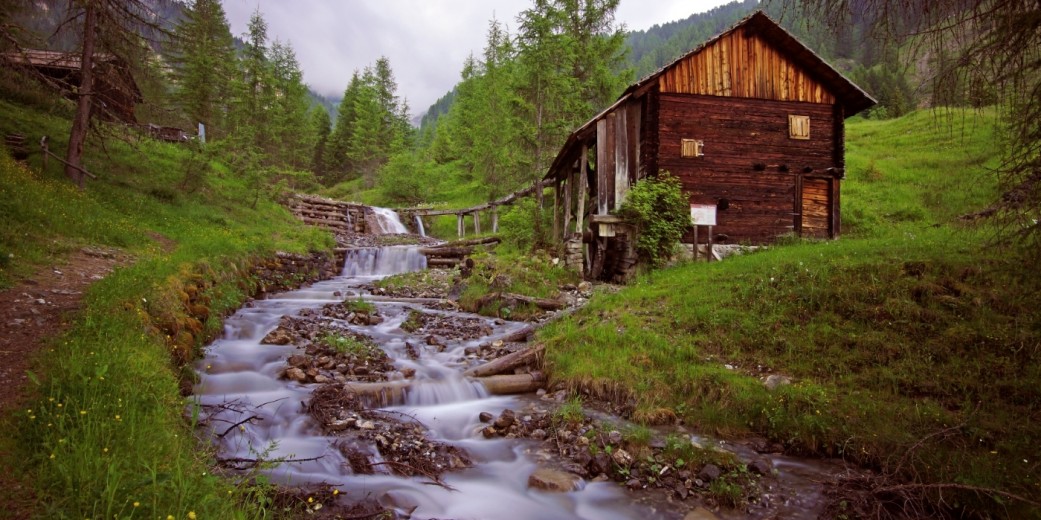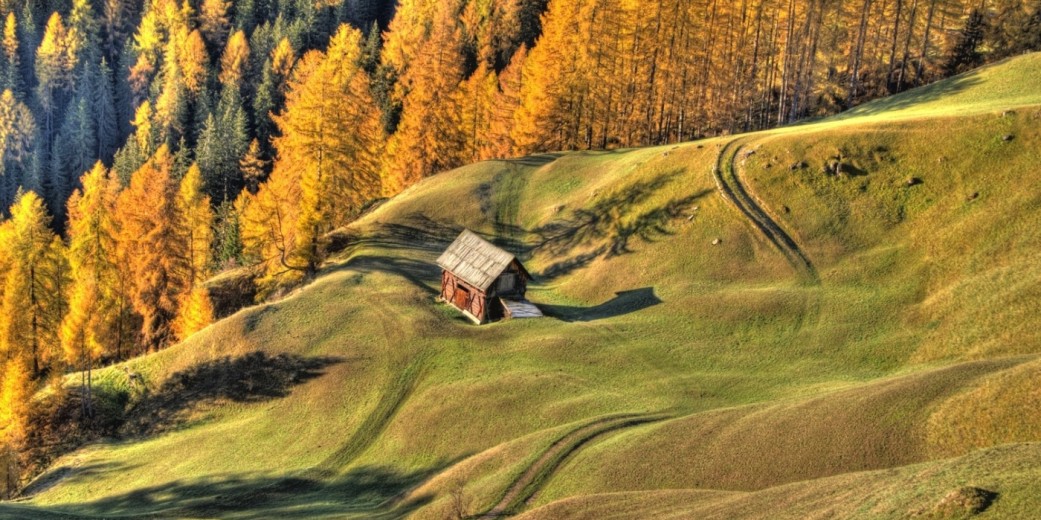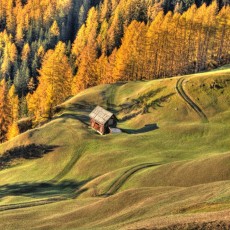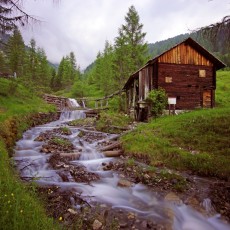The Ladin village of Lungiarü is distinguished by an outstanding natural and cultural landscape, and also by its location at the foot of the Dolomites.
The Ladin language
The Gadertal Valley, including Lungiarü, is one of the five Dolomite-Ladin valleys in Italy. The Ladin language is spoken here, and has been recognised as a separate language group in the Autonomous Province of South Tyrol since 1951. The language first came into being when the Romans conquered the regions situated along the main Alpine crest. In the centuries that followed, the local population integrated the “folk Latin” of soldiers, civil servants and traders into their vocabulary, and the Latin language which they adopted slowly evolved to become Ladin, a Romance language.
More about the Ladin language and culture
Puez-Geisler Nature Park
Lungiarü lies at the entrance to the Puez-Geisler Nature Park. The area was declared a Nature Park in 1978, and, expanded to its current size of 10,722 ha in 1999. Over half of the area of Lungiarü is located within the Puez-Geisler Nature Park. To the north, the park is bordered by the Würzjoch, to the south by the Grödner Joch, to the east by the Gadertal Valley and to the west by the Villnösstal Valley and Gröden.
Given its interesting geology, this protected area is also known as the “History book of the Earth”: all the rock types, deposits and weathering forms typical of the Dolomites are found here, and the flora and fauna of the nature park also boast a unique biodiversity. Since 2009, the Puez-Geisler Nature Park has been a part of the UNESCO World Heritage Dolomites
Campill Layers
Lungiarü has two geological peculiarities: The boundary plane between quartz phyllite and Dolomite rock at Picolin/Pikolein, and the famed Campill stratum (Ladin: func da Lungiarü), which soar on high in the Campill Valley and are around 300 metres thick. They consist of a sandy-marly-calcareous rock with a reddish hue and fossils of, amongst others, mussels and gastropods. This Bellerephon formation is contained within the Campill layers, and can reach a thickness of up to 100 metres.
Viles – Centuries-old settlement culture
The famed “Viles,” the groups of hamlets which were built on the sunny sides of the slopes are among the oldest settlements in this area. A good number of the names of these farms date back to the 13th and 14th centuries; they are among the most valuable cultural heritages of the Campill Valley, and a popular destination for day trips today: Lagoscel, Ví, Grones, Seres and Miscí.
The Viles were built in clearing “islands,” where the woodland had been razed to make room for grain crops and agriculture up to 1,600 metres a.s.l. The typical farmhouse consists of a lower floor built in stone and an upper, cantilevered floor in wood, which gives the building their distinctive mushroom-like appearance. The farm buildings are usually joined directly to the homes and at least three farms are linked, not just in proximity and shared facilities such as passageways and courtyards, but also through an economic connection in the form of a shared oven and well, and shared rights of use. The settlement memorials bear witness to a sense of belonging and parsimonious use of the land, which was the sole basis of life. One particularly characteristic touch in the small hamlets can be seen in the seven to eight metre high drying racks known as “Favas” or “Harpfen” which were used to dry grain and fodder beans.
Traditions and customs
The Campill Valley is one of those Dolomite valleys that still holds customs and traditions dear, and they take high priority in the village community. Most of the customs and traditions follow the course of the year and, for the most part, the calendar of the church. Given the isolated location of the valley and the small number of tourists in Lungiarü, local customs have been preserved in exceptionally authentic form.









